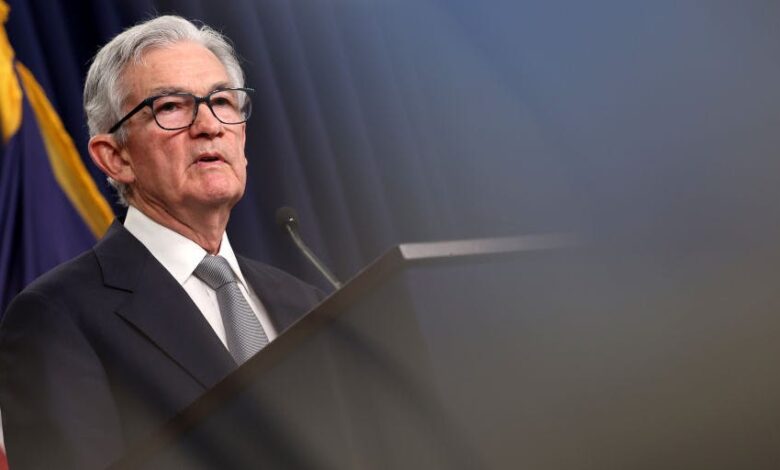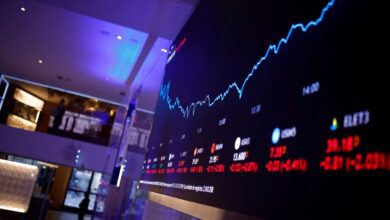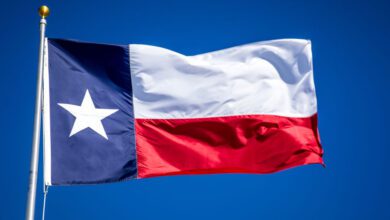
Powell Signals Rate Cut Delay As Inflation Plateaus Above Target
- US Federal Reserve Chairman Jerome Powell indicated a delay in expected interest rate cuts.
- He said the Fed needs more time to be confident of the success of its fight against inflation.
- One analyst suggests that excess funds, as a result of pandemic-era policies, may be drained from the economy this year.
US Federal Reserve Chairman Jerome Powell tempered expectations of imminent interest rate cuts on Tuesday – a sign that the Fed may have done just that. I pumped a lot of money In the economy during the pandemic that surplus is still making its way across the country.
Talk on a discussion Powell said at the Wilson Center in Washington that although inflation pressure eased last year, it had not fallen enough in recent months.
“Clearly, the latest data has not given us greater confidence and instead suggests that it will likely take longer than expected to achieve that confidence,” Powell said on Tuesday.
This means that the Fed is not confident at this point that inflation is heading towards the 2% target level in the long term.
Strong job growth Contributes to Price gains. In particular, the personal consumption expenditures price index – A The main measure of inflation As for the Fed – it was little changed in March compared to its reading of 2.8% in February, as Powell noted.
Powell added that the Fed could keep interest rates high for longer to cool rising prices — although the central bank also has room to cut if the labor market “unexpectedly weakens.”
“If high inflation persists, we can maintain the current level of restrictions as long as necessary,” he added.
Higher interest rates make borrowing more expensive for anything from mortgages to credit cards — it encourages people to save rather than spend, which in theory helps lower rates. But it takes time before the effects are felt, and the risk is that the central bank raises interest rates to the point where the economy slows and even tends to stagnate as demand shrinks.
Conversely, low interest rates encourage borrowing and spending — which boosts the economy when growth slows, as happened during the COVID-19 pandemic when the Fed cut interest rates dramatically and Pumping money in the system.
Excess funds may be drained from the economy this year, one analyst said
Powell’s comments on Tuesday were a departure from just a month ago, when Fed officials stuck to their expectations on monetary policy. Three interest rate cuts this year.
It also illustrates the difficult balancing act the Fed faces as it tries to steer the US economy toward the abyss “soft landing” Thus avoiding stagnation.
Jim Reed, a strategist at Deutsche Bank, wrote in a note Tuesday that he believes it will be “extremely difficult” to achieve a soft landing for the U.S. economy as it transitions from the biggest jump in money supply since the World War. The second largest contraction since 1930.
Although the Fed has tightened the money supply — raising interest rates 11 times since March 2022 — the scale of the coronavirus stimulus and the money supply will still take time to work through the system, Reed added in the note published before Powell’s comments. same day.
But Reid believes excess money could be drained from the economy later this year, when the money supply in the economy returns to normal.
“If that’s true, then perhaps cutting interest rates in preparation for this is the right thing to do,” Reid said. “However, in the face of inflation that is currently accelerating, it will be very difficult for the Fed to reach out and do so comfortably.”
Deusche Bank is only pricing in one Fed rate cut, in December 2024.
Demand, supply chain disruptions and fiscal stimulus also contribute to inflation
The money supply is certainly not the only thing that contributes to inflation.
As Bill Dudley, former head of the New York Federal Reserve, explained in a magazine opinion piece Bloomberg In February 2023, other factors affecting the US economy include Consumer demand, stimulus money, and the Fed keeping interest rates “too low for too long.”
“If interest rates had been much higher, earlier, the economy would have grown more slowly, the labor market would not have been tight and wage and price inflation would have been lower,” Dudley wrote.
Fed Chairman Powell had said that inflation was “temporary” Amid the COVID-19 pandemic but stopped using the term in 2022 amid Continuous price rise.
The Fed will meet April 30 to May 1 For the next policy meeting.



